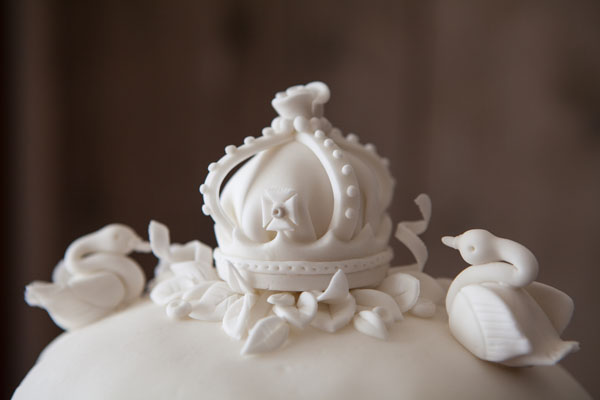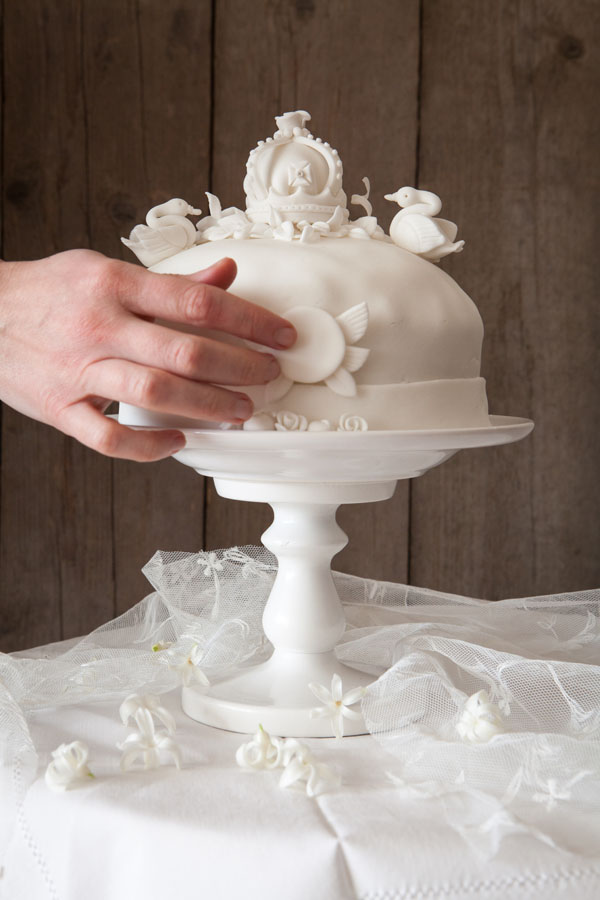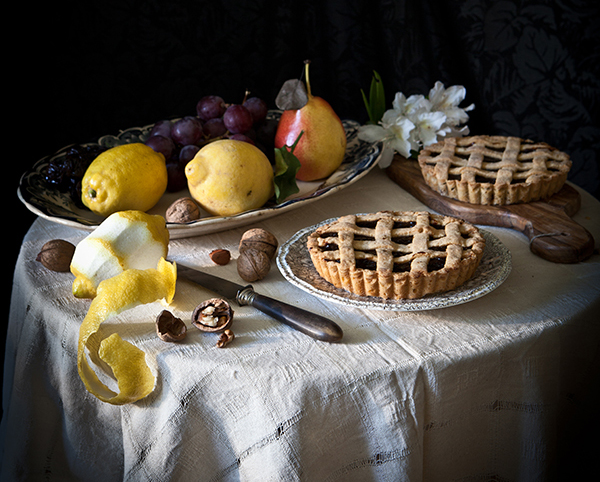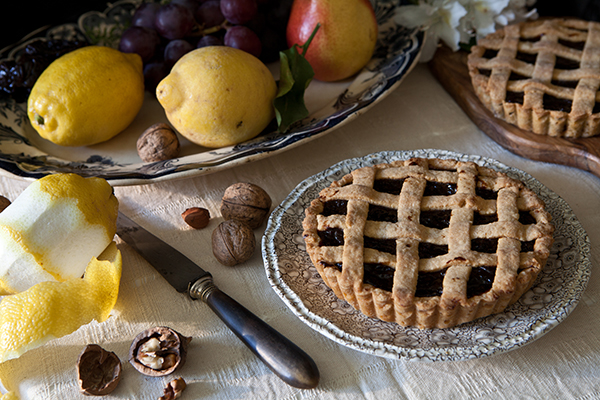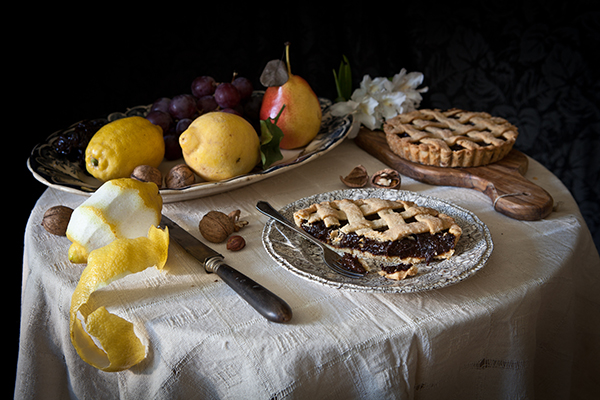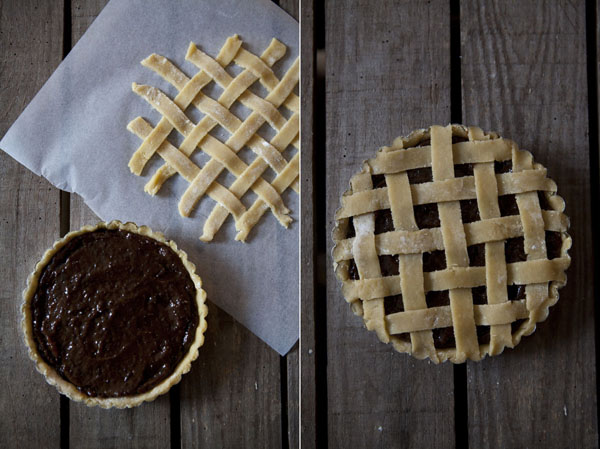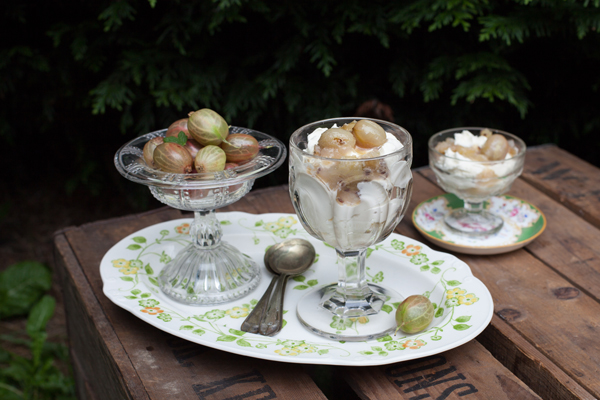The post The intriguing Twelfth cake appeared first on Miss Foodwise.
]]>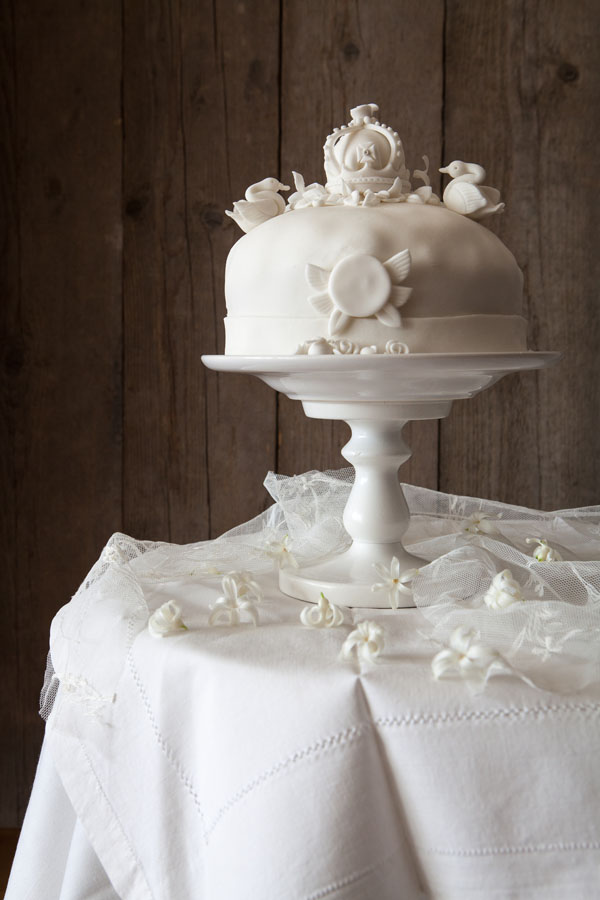
The Twelfth cake is to me one of the most intriguing of cakes in the British cuisine. The cake is traditionally baked for the feast of epiphany or as the name already reveals – the twelfth night of christmas. But baking a cake for epiphany isn’t a custom in Britain alone, in other European countries and in my home country Belgium we have the ‘3 kings cake’ (driekoningen taart) or the ‘Galette du Rois’ which is a frangipane tart with puff pastry concealing a much coveted bean which will make you king for the day. The 3 kings cake is sold with a paper crown so all is in order for the coronation of the lucky finder of the bean. At some time however it was the fashion of concealing tiny porcelain babies and nativity figures in the cake, a custom my mother in law tells me is still practiced by the bakery in my neighbourhood. I remember as a child, I’ve never had the pleasure of finding the bean which would make me king, this annoyed me very much as a little girl.
In Britain the tradition was to hide a bean and a pea in a plum cake, the bean would crown the king and the pea would crown the queen. The Twelfth cake would contain spices like cloves, mace, nutmeg and cinnamon along with dried fruits like raisins and candied orange or lemon peel.
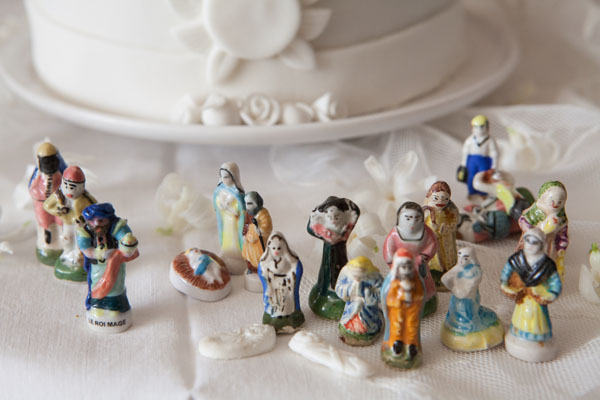 |
| Antique 3 king cake figurines, imagine biting into one of those! |
The earliest printed recipe for a Twelfth cake dates from 1803 and can be found in John Mollard’s the Art of Cookery. However, references to the custom of the Twelfth cake and the celebrations surrounding it can be found as far back in history as the 16th century and it is very possible that the tradition has been around for much longer. In a early Tudor manuscript which is kept at the Bodleian Library we find a passage about wassail cakes, which are believed to be heathen Twelfth cakes. Wassail comes from the Old English ‘Waes hale’ which most likely means ‘be whole’ or be healthy, like a kind of frase you say while making a toast. We can also find recipes for Wassail which is a type of mulled cider traditionally drunk while Wassailing, meaning a tradition of awakening the cider apple trees while singing and drinking.
In 1648, Robert Herrick’s poem ‘Twelft Night: Or King and Queen describes the celebrations of the Twelfth night beautifully. Here he speaks of a cake full of plums (plums meaning raisins rather than actual plums, see plum pudding) And goes on to describe the election of a king and queen after discovering a bean and a pea. And he mentions a gentle Lamb’s wool and the spices that should go into it to give to the king and queen for wassailing. The Lambswool is a Wassail drink made of ale or cider.
A
few years later in 1659/1660 Samuel Pepys writes in his diary on januari the 6th
of a ‘Brave cake brought us, and in the choosing, Pall was Queen and Mr.
Stradwick was King.’ Which shows that there were celebrations in the city as well as in the country, though there is no word of wassailing in Pepys lines.
During the mid 1700 up until the late 1800 Twelfth cakes were very fashionable and often decadently decorated showing elaborate scenes and figurines crafted out of sugar or wax. Crowns seem to have been the most popular decoration and usually white icing would have been used which back then was a sugar paste called gum paste which was shaped into wooden molds. We can find illustrations of large Twelfth cakes set in a scene of feasting in the Satires Collection of the British Museum, and we also find Victorian Twelfth night cards with humorous illustrations of characters. The day the Twelfth cakes, large and small would appear in the pastry shop’s windows in London a large number of people would gather in front of them to capture a glance of these most fashionable cakes. The Victorians enjoyed the Twelfth night celebrations to the full and the pastry shops sold the Twelfth night character cards with the cakes. Each guest of the party would then have to choose a card which had a verse describing the character underneath. One had to read the verse aloud and pretend to be that character until midnight. We can find an excellent description of these events and many more surrounding Twelfth day and Wassailing in ‘The Every-Day Book’ by William Hone. In the country the celebrations surrounding the twelfth night would still be the more heathen Wassailing, the twelfth night celebrations in London were considered rather vulgar by outsiders.
Although we will not easily find Twelfth cakes in the shops today, the tradition of wassailing is still very much alive with country feasts all over Britain. People come together to sing, drink wassail, eat plum cake and be merry. Once again it is the ancient and probably pre-christian tradition which has withstood the test of time. In my opinion because these traditions are more entwined with nature, the change of the seasons and the marking moments in the farming year that come with it.
What about you? Did you go wassailing or did you bake a Twelfth cake or another cake from your corner of the world?
This recipe is basically Mollard‘s recipe translated to modern day, Mollard doesn’t give measurements of the yeast and milk, which I had to test to give to you. Also the recipe of Mollard is three times the measurements given here, which means that this would have been a massive Twelfth cake!
What do you need
- organic white wheat flour, 500 g
- dried yeast, 2 teaspoons
- lukewarm milk, half a cup
- unsalted butter, softened, 75 g
- raw cane sugar, 100 g
- currants or sultanas, 340 g
- Candied orange peel or lemon, to taste
- Cinnamon, 2 teaspoons
- Cloves, pounded, 1 teaspoon
- a generous pinch of mace
- a pinch of nutmeg
- cold milk, 1,5 cups
Method
Add all the flour to a bowl and make a well in the middle, add the sugar in the well followed by half a cup of warmed milk.
Add the yeast to the milk and stir so the yeast, milk and sugar are mixed. After a few minutes the yeast will start bubbling and will look frothy.
Now add the butter and spices followed by 1 cup of milk, mix well and then add another cup of milk before adding the dried and candied fruit.
While adding the currants and peel you might need to add an additional half a cup of milk, especially if you’ve started out without soaking the currants.
Once the mixture has come together in a slightly wet dough, cover and let rest for 2 hours or more if you have the time.
Line a spring form or wooden baking hoop with baking paper and add the dough.
Put in a preheated oven at 200° C for 1 hour.
If you see that the top is browning too much, cover it with tinfoil to prevent a burnt crust.
Leave to cool in the tin or hoop and ice and top with the most decadent decorations you can manage to create. I used fondant and marzipan to create these decorations, I only need some pointers in evening out my icing!
This cake is more like a bread and reminds me of the German Stollen, but dryer.
You might also enjoy
Lambs Wool
Ypocras
Plum pudding
Cranberry and apple crumble
The post The intriguing Twelfth cake appeared first on Miss Foodwise.
]]>The post The Prune Tarts at Tudor Court appeared first on Miss Foodwise.
]]>In 1615 English poet Gervase Markham mentioned ‘a prune tart’ in his book “The English Huswife, Containing the Inward and Outward Virtues Which Ought to Be in a Complete Woman“.
In his beautiful way of writing he states:
“Take of the fairest damask prunes you can get, and put them in a clean pipkin with fair water, sugar, unbruised cinnamon, and a branch or two of rosemary; and if you have bread to bake, stew them in the oven with your bread…”
He goes on to explain in detail how to finish the prune puree and how to assemble the little tarts he likes to shape into little birds and flowers by first cutting out a pattern in paper to trace on the pastry. The tart cases or ‘coffins’ as they were called in times gone by, were raised by hand.
During Tudor times pastry had evolved from the Medieval inedible crust -that was there only to hold a filling- to sweet and savoury pastry to enjoy as a part of a dish. Eggs and butter or suet were beginning to be used making the pastry more refined and giving the cook the opportunity to be inventive with fillings as well as with decoration. If you look at Renaissance paintings especially by the Flemish and Dutch masters, you will notice the pies who are depicted on the tables as dramatic centerpieces, sometimes wildly decorated with stuffed swans or geese resting on top.
But it isn’t the only change, the Tudor court wanted to show their worldliness employing Florentine sculptors and painters for great artistic commissions, decorating royal palaces and most likely even influencing the kitchen. I can’t but help to see the striking recemblance between an Italian ‘Crostata di marmellata‘. In 1570 Bartolomeo Scappi, an Italian cook mentioned the different recipes for pastry in his book, it would take 30 years before a guide like that was published in Britain. ‘Delightes for Ladies‘ was published in 1602 but Gervase Markham’s book a decade later would provide a much easier to follow set of recipes.
It always pleases me to find links between Italian and British cookery, these are my two favourite cuisines and I feel there are a lot of things linking the two together, not only in dishes but also in philosophy.
Prune tarts bring back memories of my childhood. Normally only eaten on Ash Wednesday in my home town Antwerp, prune tart would be on our sunday breakfast table quite regularly. Our local bakery used to have the best prune tarts in sizes big and small and my mother used to buy a small one for me because she knew it is one of the few sweet things I truly enjoy.
For these prune tarts I tried to recreate a tart I had tasted years ago. As it is my favourite of tarts I can be very specific in how it should taste, the pastry can’t be too sweet and has to be very thin making the prunes the star of the show filling your mouth with a soft puree full of subtle almondy flavour and coloring your tongue black. The pastry would merely be there to encase the prune puree and to give an extra texture and buttery bite to the tart but it is very important to get it right. You can’t have the prune puree without the crust, they are entwined.
I called upon an old friend I used to visit in her bakery when I should be out partying. Now living a sunny life in Thailand running her own shop in baking equipment she gave me her recipe for the pastry, remembering her prune tart I gave it a go.
Although I prefer Gervase Markham’s method of slowly cooking the prunes in the oven while you are baking a bread or stewing a tough cut of meat, one can easily -like he states as in his book – cook them on a moderate fire. However when stewed slowly in the oven, you do get a more intense flavour so next time you are cooking a Sussex Stewed steak, pop some prunes in the oven as well.
What do you need (makes 4, 15 cm wide tarts)
For the pastry (I halved the recipe, for 1kg of flour use 5 eggs)
- 500g organic plain white flour
- 250g raw cane sugar
- 250 g cold butter, unsalted and cubed
- 3 organic eggs
- vanilla, half a teaspoon
- 1g baking powder
For the filling
- 750 g dried prunes
- 1 teaspoon lemon juice
- 2 tablespoons of Muscovado sugar or Molasses
Equipment
- 4, 15 cm tart tins
- rolling pin
- greaseproof paper
Method
- Combine the butter and the sugars using a wooden spatula or spoon until the butter is covered in sugar
- Now start to add the flour cup by cup carefully combining the mixture with a blunt knife, cutting the butter into smaller bits to combine. The mixture looks like breadcrumbs now.
- Add the eggs and the baking powder, and use one of your hands to work it in. At this point it is easy to turn the dough out on a clean working surface.
- Knead until you get a smooth dough, but be careful not to overwork the dough so as soon as all combined well shape it into a brick and wrap it it cling film.
- Chill the pastry overnight
- Soak the prunes overnight in water, just covering them
The next day…
- If your prunes have stones, remove them and try to remove some of the kernels using a nut cracker. The stones are hard to crack so never mind if you can’t get them out. It doesn’t make the tart any less delicious.
- If you do get a couple (4 or 5) out, add them to the prunes to stew, they will give a wonderful almond flavour.
- Bring the prunes to the boil with the soaking water, the two tablespoons of muscovado or molasse sugar, the lemon juice and let simmer for about 30 minutes or until the water is reduced on a medium flame.
- Discart the water, let it cool, remove the kernels if you had them, and when cooled puree with a blender.
- If the puree is too runny at this point, put it back on the hob to reduce a bit further. If you had to do this, let it cool again before further use. It will become more solid when cooled.
When the prunes have cooled
- Butter your tart tins and dust with flour
- Cut of a piece of your cold pastry, roughly the size of your tart tin. It will be very solid so start by pressing it down with a rolling pin on a generously floured work surface.
- Transfer your pastry to a piece of greaseproof paper
- Sprinkle some flour over the pastry and start rolling it until it is about 3 mm thick, when the pastry sticks to the rolling pin, add flour, keep adding it so the pastry stays dry.
- Check if your pastry isn’t sticking to your greaseproof paper, cut off the extra pastry so you remain with a circle that is just a few cm larger than your tart tin.
- Gently turn the pastry over the tart tin and let it sink into the shape.
- Now use your fingers to set the pastry into the tart tin and crimp the edges.
- Don’t overwork the pastry as it should remain cool.
- Transfer the tart pastry to the fridge while you do the other 3
Preheat your oven to 160° C
For the lattice top*
- Roll out your pastry to 3 mm as stated above
- Cut 1 cm wide strips, dust them well with flour.
- On a sheet of greaseproof paper -dusted with flour- create the lattice as shown below
- Fill your pastry with the prune filling
- Gently but quickly turn over the lattice top to fit on top of the tart
- Now you will most likely need to adjust the straps of pastry so it is straight. Don’t worry, if it is your first time it will either look horrible or you will be in luck and it will be quite straight from the first attempt.
- Crimp the edges of the straps, cool in the fridge and proceed the same way with the other 3 tarts
- Put in the middle of the preheated oven for 1 hour and 20 minutes, or until nicely brown, no less than an hour for sure.
- Leave the tarts to cool in their tins completely before serving
* If creating the strapwork seems daunting, why not cut out shapes with a cookie cutter to place on top of the prune puree, it can look just as nice!
You will most likely have leftover pastry, wrap it in clingfilm, bag it and freeze it for when you need it. Always keep prunes in your larder for when you are using your oven for a long time, you can bake the tarts at the same time and get more out of your energy usage.
Enjoy!
You might also like
Cobnut and apple tart
Blaeberry pie
The post The Prune Tarts at Tudor Court appeared first on Miss Foodwise.
]]>The post Fool appeared first on Miss Foodwise.
]]>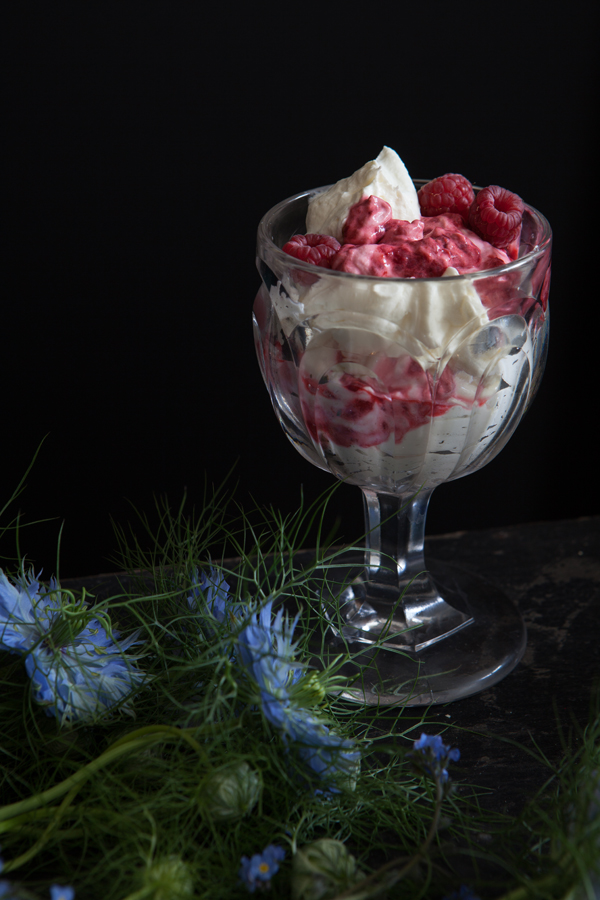
I started my second year in Culinary school this week. It’s going to be tough again combining this with my day job as a graphic designer. It always seems that the one day I can’t seem to get away from the office in time is the evening I have Culinary school to rush over to. I love the experience, the knowledge passed on to us by the chefs. I’m the student with the questions, the never ending enthusiasm, with the jokes and the loud giggles. Lessons always end with dinner, bottles of wine are opened and if we’re lucky a fellow student Jean, otherwise known as ‘the butcher’ has brought some of his home made port. We have a good time, have a laugh, a taste and a discussion about food. Our class is always the last to remain in the building and we leave the school grounds with rosy cheeks and a little bit pie-eyed.
A lot of modern recipes for Fruit Fools state the dish dates back as far as the 16th century. There is a recipe for Trifle in ‘The Good Huswifes Jewel’ by Thomas Dawson written in 1596. The recipe goes as follows:
Take a pint of thick cream, and season it with sugar and ginger, and
rose water. So stir it as you would then have it make it luke warm in a
dish on a chafing dish and coals. And after put it into a silver piece
or a bowl, and so serve it to the board.
Many historians including me have the theory that this early trifle recipe might have been where the Fool was born. However, this recipe does not contain any kind of fruit so maybe the first fool, wasn’t with fruit at all.
I have found a recipe for a ‘Gooseberry foole’ in ‘The Compleat Cook‘ by WM from 1658
Take your Gooseberries, and put them in a Silver or Earthen Pot, and set it in a Skillet of boyling Water, and when they are coddled enough strain them, then make them hot again, when they are scalding hot, beat them very well with a good piece of fresh butter, Rose-water and Sugar, and put in the yolke of two or three Eggs; you may put Rose-water into them, and so stir it altogether, and serve it to the Table when it is cold.
In this later recipe where indeed is spoken of a Fool there is no mention of cream, in fact many early Fool recipes use an egg mixture rather than just cream.
Gervase Markham as well as Robert May, have recipes for Norfolk Fools, they all have an egg mixture rather than cream. Does this mean Thomas Dawson’s recipe was actually an early Trifle after all?
Then I came across a recipe for a Strawberry or Raspberry Fool in ‘The Compleat Housewife: or Accomplished Gentlewoman’s Companion’ by Eliza Smith written in 1739. This appears to be one of the first recipes of a fool like we know it today. The fruit is squeezed and orange flower water is added, then cream.
Why the word ‘Fool’ is used is not entirely clear, some claim it’s derived from the French verb fouler which is used in the context of pressing grapes for wine with one’s feet.
For this Raspberry and Strawberry Fool I started out from a recipe dated 1823, I found in ‘Good things in England’ by Florence White. This is one of the recipes sent to White when she had called upon the people to send in their British family recipes.
The original recipes states you should pass the fruit trough a hair sieve but I didn’t as I think the interplay of textures is quite lovely.
You can use any fruit for this dessert but it works best with tart fruit, the most popular being gooseberries, however these should be stewed until they are soft enough.
What do you need (for 2)
a punnet of raspberries
a punnet of strawberries
(or another tart fruit like gooseberries which you stew first and then let cool)
500 ml double cream
1 teaspoon orange flower water (optional, used in traditional recipe)
1 teaspoon sugar (optional, used in traditional recipe)
Method
Divide your cream into two equal parts
Bruise 2/3 of the raspberries and all the strawberries with a fork, leave some bits in for texture, you can even add some whole raspberries at the end
Mix them with the orange flower water and sugar (optional, used in traditional recipe)
Stir one part of the cream in the fruit so you get a nice pink color
Now layer the plain cream with the fruit cream you created into the jars or glasses of your choice)
Decorate with some leftover fruits.
Enjoy!
* Why not substitute half of the cream with thick yoghurt for a lighter version of this dish!
Join me next time for some home made Raspberry Vinegar!
The post Fool appeared first on Miss Foodwise.
]]>